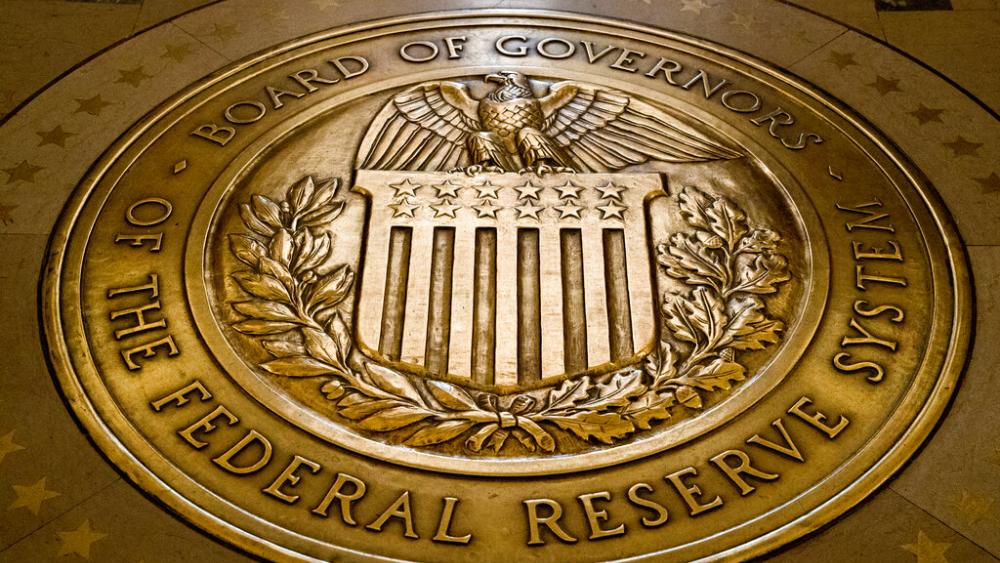WASHINGTON (AP) - Chair Jerome Powell said Wednesday that the Federal Reserve will keep pursuing its low-interest-rate policies until an economic recovery is well underway, acknowledging that the economy has faltered in recent months.
The Fed said in a statement after its latest policy meeting that hiring and economic growth had slowed, particularly in industries affected by the raging pandemic. The officials kept their benchmark short-term rate pegged near zero and said they would keep buying Treasury and mortgage bonds to restrain longer-term borrowing rates and support the economy.
Speaking at a news conference, Powell made clear his belief that the economy will struggle in the coming weeks and months until widespread vaccinations and government rescue aid eventually fuel a sustained rebound.
“We're a long way from full recovery,” he said. “Something like 9 million people remains unemployed as a consequence of the pandemic. That’s as many people as lost their jobs at the peak of the global financial crisis and the Great Recession.”
The policymakers warned that the virus is posing risks to the economy and removed phrases from their previous statement that had said the pandemic was weighing on the economy in the “near term” and it posed risks “over the medium term."
Powell said the Fed's policymakers removed that language because they see the pandemic increasingly as a short-term risk that will likely fade as vaccines are distributed more widely. But he also cautioned that the threat remains a serious one, particularly because of the potential harm from new strains of the virus.
“We have not won this yet,” Powell said. “There’s nothing more important to the economy now than people getting vaccinated.”
For now, the job market, in particular, is faltering, with nearly 10 million jobs still lost to the pandemic, which erupted 10 months ago. Hiring has slowed for six straight months, and employers shed jobs in December for the first time since April. The job market has sputtered as the pandemic and colder weather have discouraged Americans from traveling, shopping, dining out, or visiting entertainment venues. Retail sales have declined for three straight months.
At a news conference, Chair Jerome Powell was pressed on whether the Fed should respond to the recent speculative surge in the prices of some individual stocks, notably shares of GameStop, and whether that buying frenzy suggested a dangerous bubble in overall stock prices. Powell deflected the questions by saying the Fed's interest rate policies aren't well-suited to address speculation in the stock market.
In addition, he said, “if you look at what’s really been driving asset prices in the last couple of months, it isn’t monetary policy. It’s expectations about vaccines and also fiscal policy. Those are the news items that have been driving asset values in recent months.”
In its statement Wednesday, the Fed added a reference to vaccinations - a sign that the policymakers, along with most economists, envision a sharp rebound in the second half of the year as the virus is brought under control by vaccines and government-enacted rescue money spreads through the economy. Americans fortunate enough to have kept their jobs have stockpiled massive savings that suggest pent-up demand that could be unleashed, with a big lift to the economy, once consumers increasingly feel safe about resuming their old spending patterns.
The Fed has signaled that it expects to keep its key short-term rate at a record low between zero and 0.25% through at least 2023. Earlier this month, Vice Chair Richard Clarida said he expects the Fed's bond purchases to extend through the end of this year, which would mean continued downward pressure on long-term loan rates.
Since the Fed last met, in mid-December, there has been some good news. The distribution of an effective vaccine has begun, and a $900 billion relief package was enacted in late December. President Joe Biden has since proposed another financial support plan - a $1.9 trillion package that is larger than many economists had expected and will require congressional approval.
In recent months, Powell had repeatedly urged Congress and the White House to provide such stimulus. Some central bank officials have suggested that they might consider withdrawing Fed stimulus later this year, earlier than investors generally expect, although Powell contradicted that view in a public appearance earlier this month.
In December, the Fed said it would continue its bond purchases until “substantial further progress” had been reached toward achieving its goals of low unemployment and stable inflation of about 2% a year.
The Fed wants to avoid a repeat of 2013 when Chairman Ben Bernanke told Congress that the Fed was considering tapering the bond buys it was then engaged in. Bernanke’s remark caught markets unaware and sent longer-term rates jumping - an event that came to be dubbed the “taper tantrum.”
The Fed’s drive to keep long-term rates low has helped hold down mortgage rates and fueled home sales and price increases. In November, U.S. home prices jumped at their fastest pace in more than six years, surging 9% compared with 12 months earlier, according to the S&P CoreLogic Case-Shiller 20-city home price index.
The prospect of additional stimulus and ongoing vaccinations has raised some concern that as Americans eventually release pent-up demand for airline tickets, hotel rooms, new clothes, and other goods and services, the economy might accelerate and annual inflation could surge above the Fed’s 2% target. If many companies don’t initially have the capacity to meet that demand, prices would pick up. Yet most Fed officials appear unconcerned about those trends potentially igniting runaway price increases.
One reason the Fed isn’t expected to raise rates anytime soon is that it adopted a framework last year that calls for inflation to average 2% over time. Given that inflation has mostly languished below that level since the Fed adopted it as a target in 2012, policymakers would have to let inflation run above 2% for some time to make up for the years of below-target price increases.
Copyright 2021 The Associated Press. All rights reserved
STAY UP TO DATE WITH THE FREE CBN NEWS APP
Click Here Get the App with Special Alerts on Breaking News and Top Stories
Did you know?
God is everywhere—even in the news. That’s why we view every news story through the lens of faith. We are committed to delivering quality independent Christian journalism you can trust. But it takes a lot of hard work, time, and money to do what we do. Help us continue to be a voice for truth in the media by supporting CBN News for as little as $1.











 Support CBN News
Support CBN News







